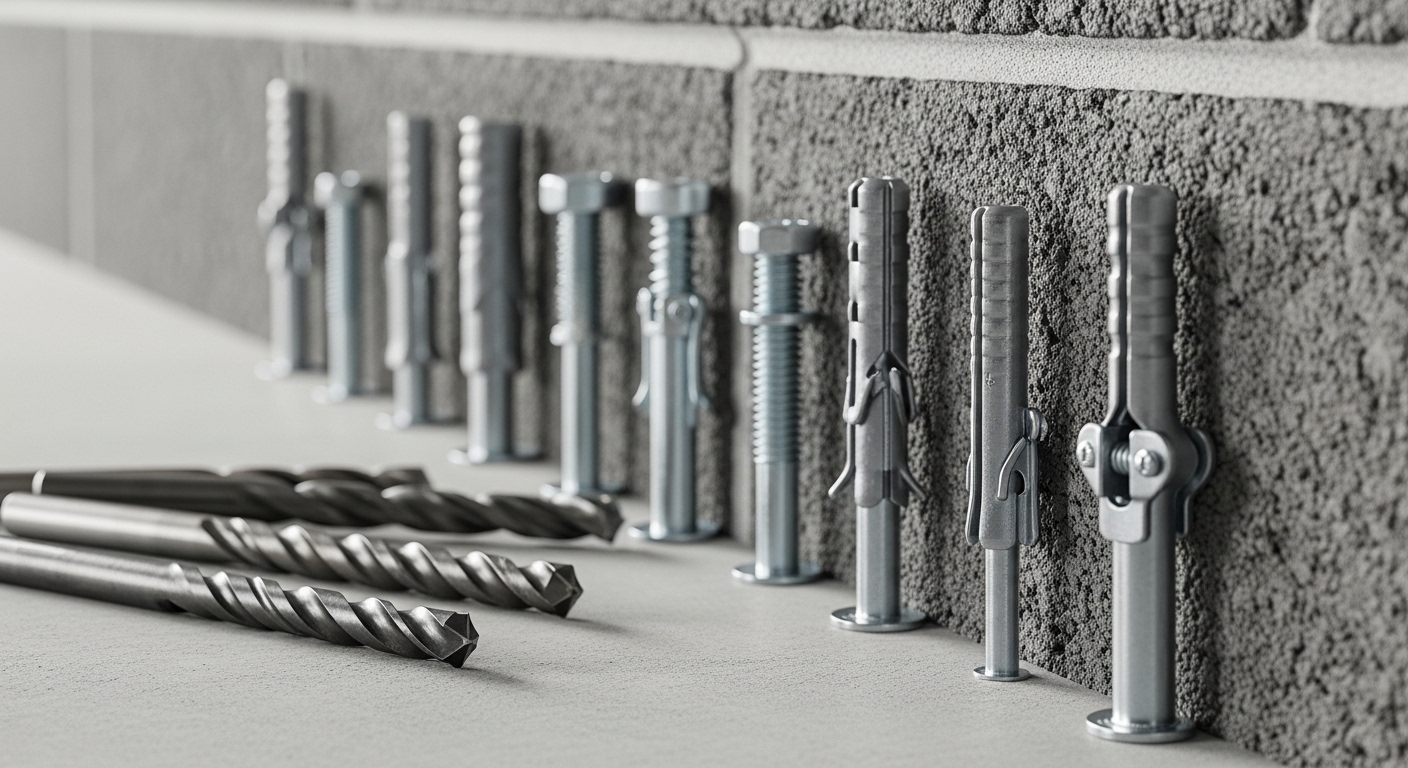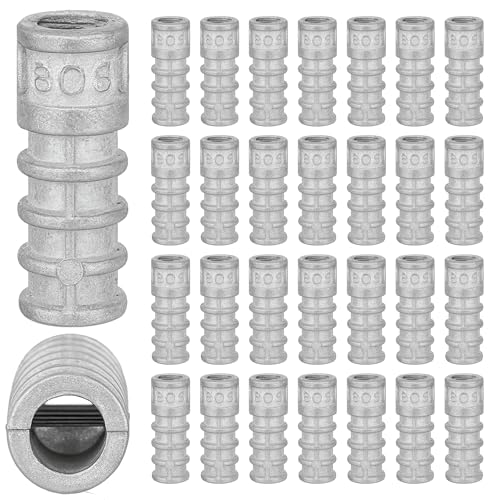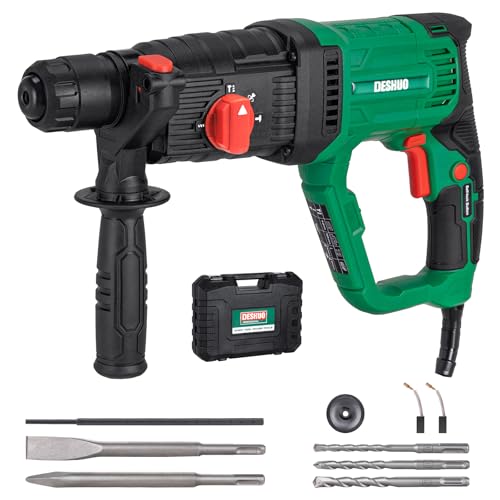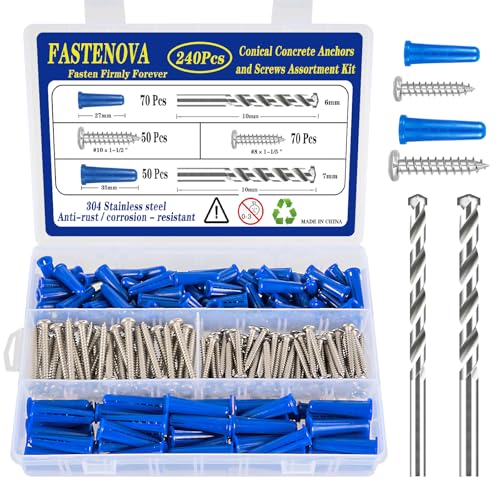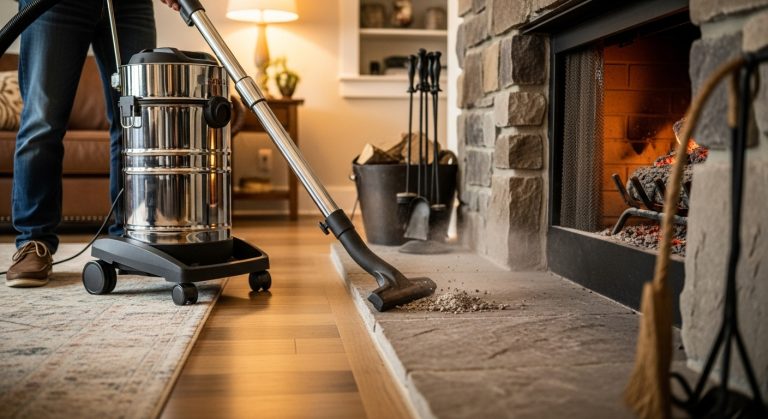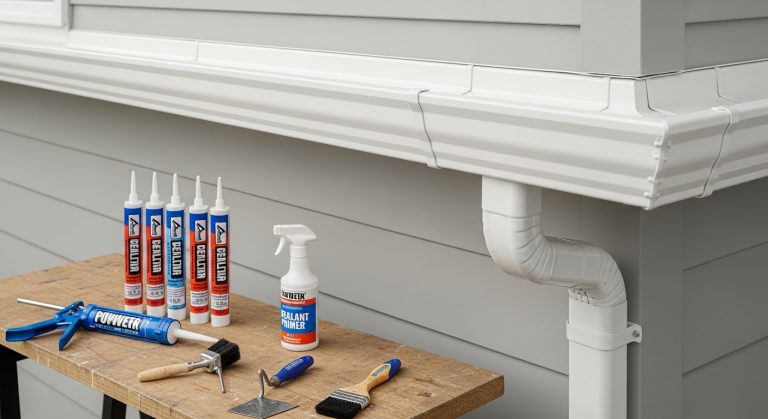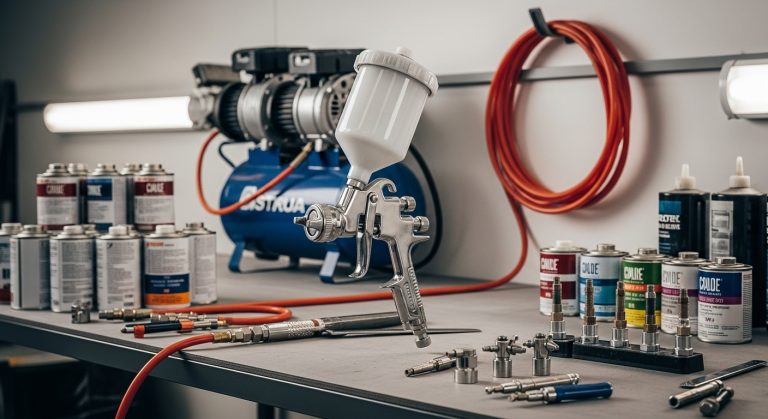Best Anchor for Cinder Block: Ultimate Guide & Selection
Struggling to secure items to cinder block walls? You’re not alone. Sleeve anchors are the top choice for cinder block applications, offering excellent holding power in both hollow and solid sections with easy installation and versatile head styles. This comprehensive guide reveals the most effective anchoring solutions that professionals trust.
Whether you’re mounting heavy equipment, installing shelving, or securing structural elements, choosing the right anchor can make or break your project. Poor anchor selection leads to failed installations, safety hazards, and costly repairs.
Discover the proven techniques that ensure your installations stay secure for years.
Key Takeaways
- Sleeve anchors are the top pick for cinder block, providing reliable performance in both hollow and solid sections with easy installation and strong holding power.
- Avoid wedge anchors in cinder block, as their aggressive expansion can crack or damage the block, leading to failed installations.
- Choose anchors based on block section: Use sleeve or double expansion anchors for versatility, toggle or snap toggle anchors for hollow sections, and machine screw anchors for solid areas.
- Follow safety factors: Always use anchors rated for at least four times the actual load for static applications, and even higher for dynamic or vibratory loads.
- Proper installation is critical: Use a hammer drill with a masonry bit, clean out all debris from the hole, and match drill bit size and hole depth to anchor specifications.
- Through-bolt systems offer maximum strength when both sides of the wall are accessible, distributing loads across the entire block for heavy-duty applications.
- Select anchor material for the environment: Use zinc-plated steel for dry indoor use, stainless steel for outdoor or corrosive environments, and Grade 316 stainless for marine settings.
Cinder Block Structure
Cinder blocks present unique challenges that require specialized fastening approaches. These hollow masonry units consist of three distinct sections that each respond differently to anchor installation.
The solid webbing provides the strongest attachment points, similar to solid concrete. The hollow cells require anchors that can span or fill the void effectively. The mortar joints between blocks offer another fastening option, though holding strength depends on mortar quality.
Why Standard Anchors Fail in Cinder Block
Traditional concrete anchors often fail in cinder block because they’re designed for solid materials. Wedge anchors, while excellent for concrete, can crack cinder blocks due to their aggressive expansion mechanism.
The brittle nature of cinder block means excessive expansion forces can cause catastrophic failure. Hollow sections provide insufficient material for many expansion-type anchors to grip effectively.
Understanding these limitations helps you avoid common mistakes that lead to anchor failure and potential safety hazards.
Top Anchor Types for Cinder Block Applications
Sleeve Anchors – The Professional’s Choice
Sleeve anchors dominate professional installations due to their exceptional versatility and reliability. These pre-assembled anchors work effectively in all three cinder block sections with consistently high holding values.
The expansion mechanism distributes forces evenly, reducing stress concentration that could crack the block. Available in multiple diameters from 1/4″ to 3/4″ and various head styles including hex, flat, acorn, and round.
Installation requires only a hammer drill and the correct diameter masonry bit. The drill bit size equals the anchor diameter, simplifying the selection process for installers.
Double Expansion Anchors – Maximum Grip
Double expansion anchors excel in challenging applications where base material quality is questionable. The anchor expands along its entire length, creating multiple contact points for superior holding power.
These anchors work exceptionally well in softer cinder blocks or when drilling into hollow sections. The distributed expansion reduces the risk of material failure compared to single-point expansion designs.
Each anchor requires a separate bolt with national coarse threads, allowing customization of bolt length for specific applications.
Lag Shield Anchors – Time-Tested Reliability
Lag shield anchors have served the construction industry for decades with proven performance in cinder block applications. Available in short and long versions to accommodate different material hardness levels.
The short version suits very hard base materials, while the long version works better in softer or lower-quality blocks. Diameters range from 1/4″ to 3/4″ to handle various load requirements.
These anchors require lag screws for installation, providing the flexibility to adjust bolt length as needed for specific applications.
Specialized Anchor Solutions
Machine Screw Anchors – Solid Section Specialists
Machine screw anchors perform best in the solid sections of cinder blocks where they can achieve proper setting and expansion. These anchors require the bottom of the drilled hole for correct installation.
A setting tool is essential for proper installation, ensuring the anchor expands correctly against solid material. Special hollow-set tools allow installation in hollow sections when necessary.
Available in sizes from #6 through 3/4″, these anchors provide reliable holding power for medium-duty applications in solid cinder block sections.
Toggle and Snap Toggle Anchors – Hollow Section Solutions
When drilling hits a hollow section, toggle-style anchors provide effective fastening solutions. These anchors span the hollow cavity, distributing loads across a larger area.
Snap toggle anchors offer superior holding power compared to traditional wing toggles. They require larger installation holes but provide exceptional strength in hollow applications.
These anchors work best for light to medium loads where access to both sides of the wall isn’t available for through-bolt installation.
Through-Bolt Installation – Maximum Strength
Through-bolt systems provide the highest holding values when both sides of the cinder block wall are accessible. This method involves drilling completely through the block and using plates and nuts on both sides.
The installation distributes loads across the entire block thickness, virtually eliminating the risk of anchor failure. This approach works equally well in hollow and solid sections.
Through-bolts are ideal for heavy-duty applications such as structural attachments, equipment mounting, and safety-critical installations.
Installation Techniques and Best Practices
Proper Drilling Methods
Hammer drills with carbide-tipped masonry bits are essential for successful cinder block drilling. Standard drill bits will dull quickly and may not penetrate effectively.
Drill bit selection depends on the anchor type. Sleeve anchors require bits equal to the anchor diameter, while female anchors need bits matching the outside diameter rather than the designated size.
Drilling speed should be moderate to prevent overheating the bit. Apply steady pressure without forcing the drill, allowing the carbide tip to cut through the material effectively.
Hole Preparation and Cleaning
Thorough hole cleaning is critical for anchor performance. Dust and debris prevent proper anchor seating and reduce holding strength significantly.
Use compressed air, wire brushes, or vacuum systems to remove all drilling debris. Multiple cleaning passes ensure complete debris removal from the hole.
Hole depth should match manufacturer specifications exactly. Shallow holes prevent full anchor engagement, while oversized holes reduce holding power.
Anchor Placement Strategies
Avoid mortar joints by at least 1 inch when possible, as these areas provide inconsistent holding values. The quality and quantity of mortar significantly affect anchor performance.
For heavy loads, use multiple anchors with total ratings 400% higher than the object weight. This safety factor accounts for dynamic loads and material variations.
Spacing requirements vary by anchor type and load. Consult manufacturer specifications for minimum edge distances and anchor spacing to prevent interference.
Load Considerations and Safety Factors
Understanding Load Types
Static loads remain constant over time, such as mounted equipment or shelving. These loads are easier to calculate and typically require lower safety factors.
Dynamic loads involve movement, vibration, or impact forces. These applications require higher safety factors and may benefit from specialized anchor types designed for vibratory conditions.
Environmental factors such as temperature cycling, moisture exposure, and corrosive conditions affect long-term anchor performance and should influence anchor selection.
Safety Factor Calculations
Professional installations typically use safety factors of 4:1 for static loads in cinder block applications. This means anchors should be rated for four times the actual load.
Dynamic applications may require safety factors of 6:1 or higher, depending on the frequency and magnitude of load variations.
Consider load distribution across multiple anchors rather than relying on single-point attachments for critical applications.
Material Quality Assessment
Cinder block quality varies significantly between manufacturers and installation conditions. Older blocks may have reduced strength due to weathering or poor initial quality.
Test drilling in inconspicuous areas can reveal material characteristics before committing to anchor locations. Excessive drilling dust or easy penetration may indicate weak material.
Mortar joint quality affects anchor performance when fastening near or through these areas. Poor mortar may require alternative anchor placement or reinforcement.
Corrosion Resistance and Material Selection
Indoor vs. Outdoor Applications
Indoor installations in dry environments can use zinc-plated carbon steel anchors effectively. These provide adequate corrosion resistance for most interior applications.
Outdoor applications require stainless steel anchors to prevent rust and maintain holding strength over time. Grade 304 stainless steel suits most outdoor conditions.
Marine or highly corrosive environments may require Grade 316 stainless steel for maximum corrosion resistance and longevity.
Anchor Material Options
Carbon steel anchors with zinc plating offer the most economical solution for dry, indoor applications. The plating provides basic corrosion protection.
Hot-dipped galvanized anchors provide enhanced corrosion resistance for moderate outdoor exposure without the cost of stainless steel.
Stainless steel options in grades 304 and 316 offer superior corrosion resistance for demanding environments, though at higher initial cost.
Common Installation Mistakes to Avoid
Anchor Type Mismatches
Using wedge anchors in cinder block is a common mistake that often leads to block cracking. These anchors are designed specifically for solid concrete applications.
Oversized anchors can split cinder blocks, especially near edges or in thin-walled sections. Always verify anchor size compatibility with block dimensions.
Undersized anchors may not provide adequate holding power, leading to gradual loosening or sudden failure under load.
Drilling Errors
Excessive drilling speed can overheat carbide bits and reduce their effectiveness. Maintain moderate speeds with steady pressure for best results.
Wrong bit types such as wood or metal bits will not penetrate masonry effectively and may damage both the bit and the material.
Insufficient hole depth prevents proper anchor engagement, while excessive depth may weaken the surrounding material unnecessarily.
Installation Technique Problems
Incomplete hole cleaning leaves debris that prevents proper anchor seating and reduces holding strength significantly.
Over-tightening anchors can strip threads or crack the surrounding material, especially in hollow sections with limited material thickness.
Improper anchor orientation affects expansion patterns and may reduce holding power or cause uneven stress distribution.
Frequently Asked Questions
Can I use wedge anchors in cinder block?
No, wedge anchors should never be used in cinder block. These anchors are designed specifically for solid concrete and create excessive expansion forces that can crack or split cinder blocks.
The aggressive expansion mechanism of wedge anchors concentrates stress in a small area, which exceeds the tensile strength of most cinder block materials. This often results in catastrophic anchor failure.
What’s the strongest anchor for heavy loads in cinder block?
Through-bolt installations provide the highest holding strength when both sides of the wall are accessible. This method distributes loads across the entire block thickness.
For single-side installations, sleeve anchors offer the best combination of strength and reliability in both hollow and solid sections. Double expansion anchors work well when material quality is questionable.
How deep should I drill holes for cinder block anchors?
Hole depth should match the manufacturer’s specifications exactly for each anchor type. Generally, holes should be deep enough to fully embed the anchor plus allow for proper expansion.
Sleeve anchors typically require holes equal to the anchor length minus the thickness of the material being attached. Always consult specific manufacturer guidelines for precise depth requirements.
Can I install anchors in the mortar joints between blocks?
Yes, but holding strength depends entirely on mortar quality and quantity. High-quality, well-filled joints can provide excellent anchor performance, while poor mortar may fail unexpectedly.
Test the mortar condition by drilling a small pilot hole to assess density and integrity. Crumbling or soft mortar indicates the joint may not provide reliable holding power.
What size drill bit do I need for different anchor types?
Sleeve anchors and hammer drive anchors require drill bits equal to the anchor diameter. Female-type anchors need bits matching the outside diameter, not the designated anchor size.
Concrete screws like Tapcons require smaller holes than the screw diameter to allow thread cutting. Check manufacturer specifications for exact bit sizes, as requirements vary by anchor type.
Make Your Installation Rock-Solid
Choosing the right anchor for cinder block transforms challenging installations into reliable, long-lasting connections. Sleeve anchors remain the professional standard for their versatility and proven performance across all cinder block sections.
Don’t compromise on quality when safety and reliability matter. Invest in proper anchors and installation techniques that professionals trust. Your projects deserve fastening solutions that stand the test of time.
Start your next cinder block project with confidence, knowing you have the knowledge to select and install anchors that won’t let you down.

